
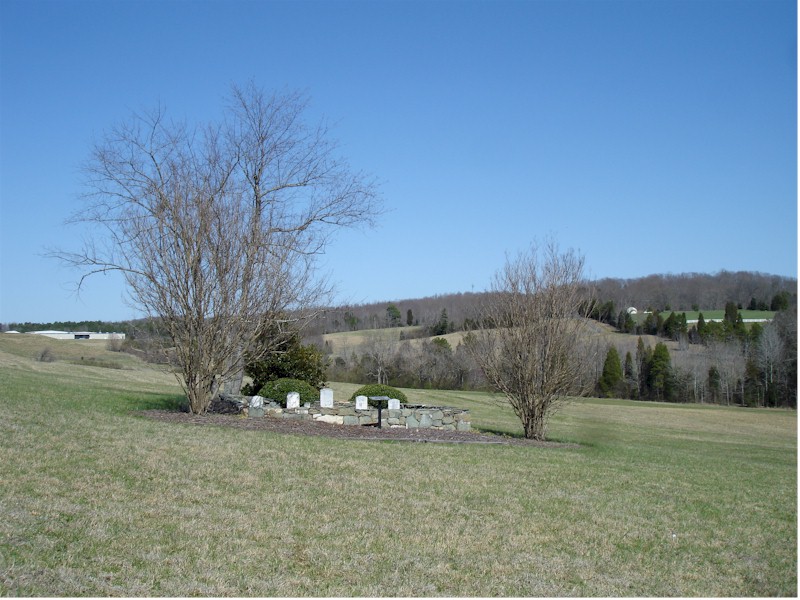
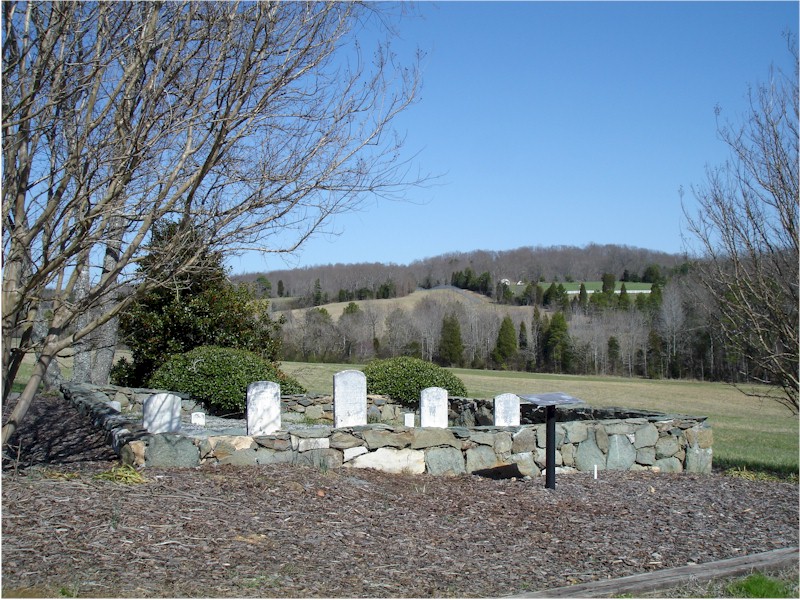
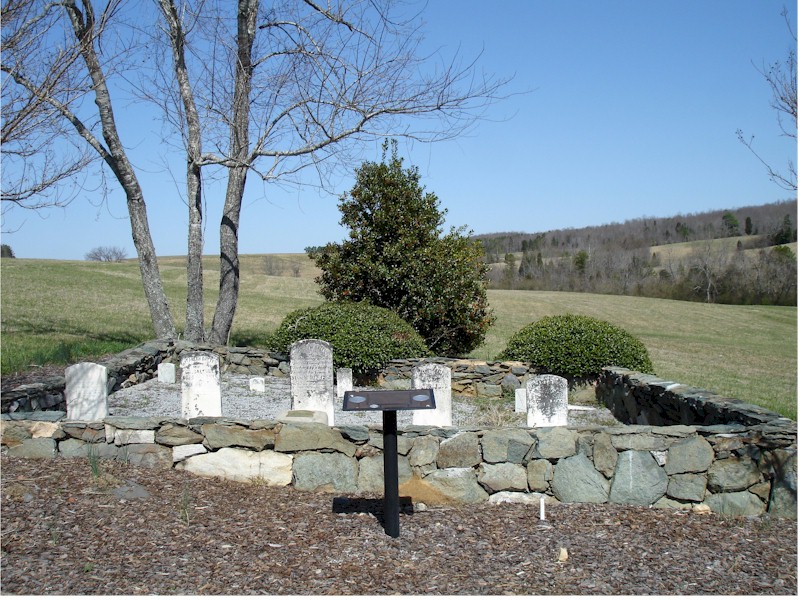
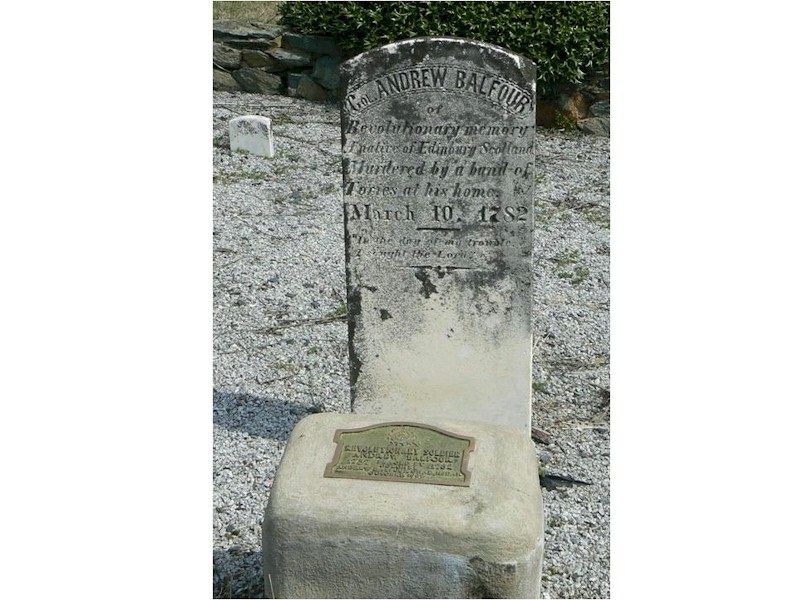
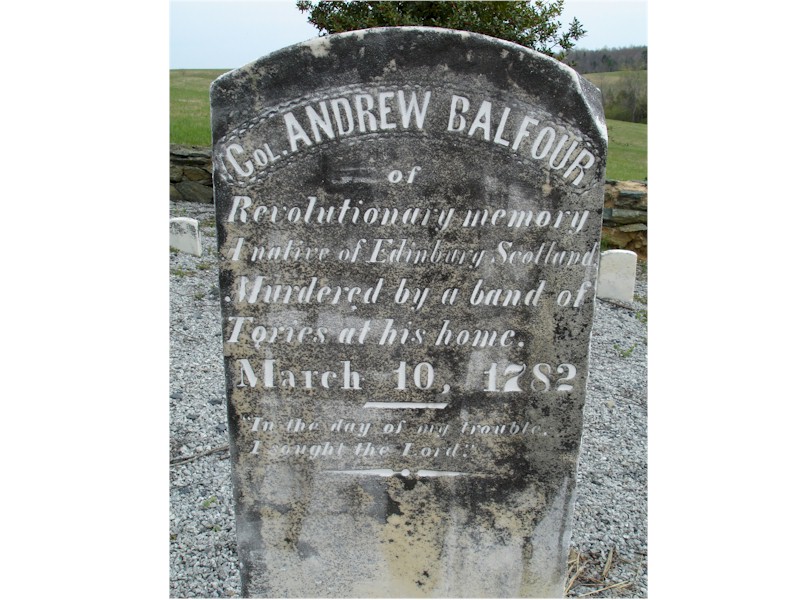
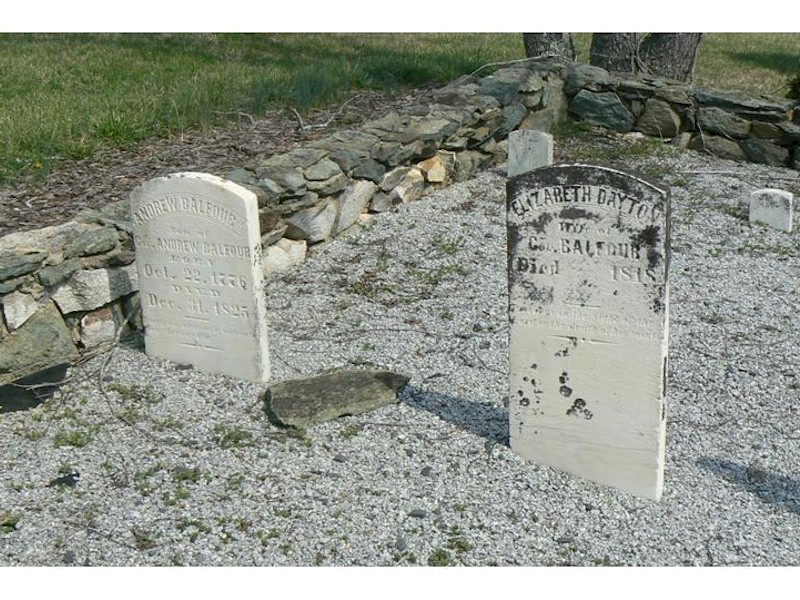
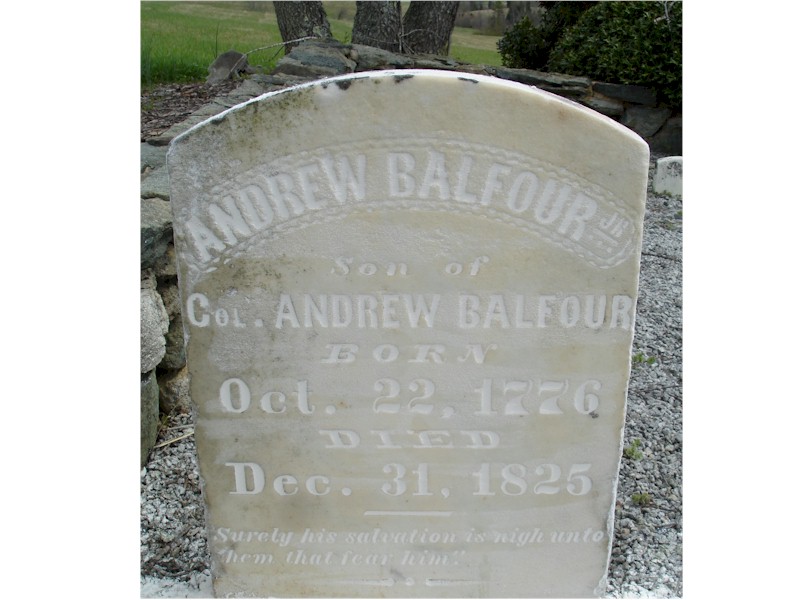
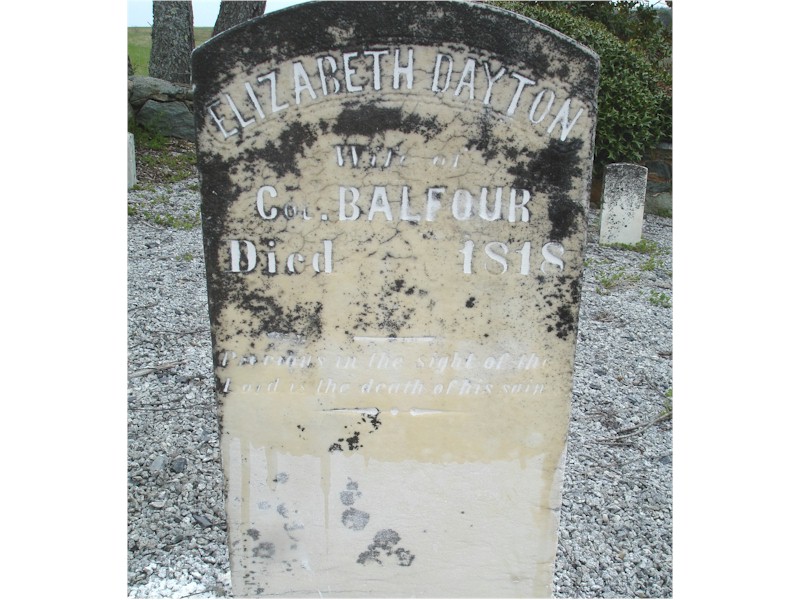
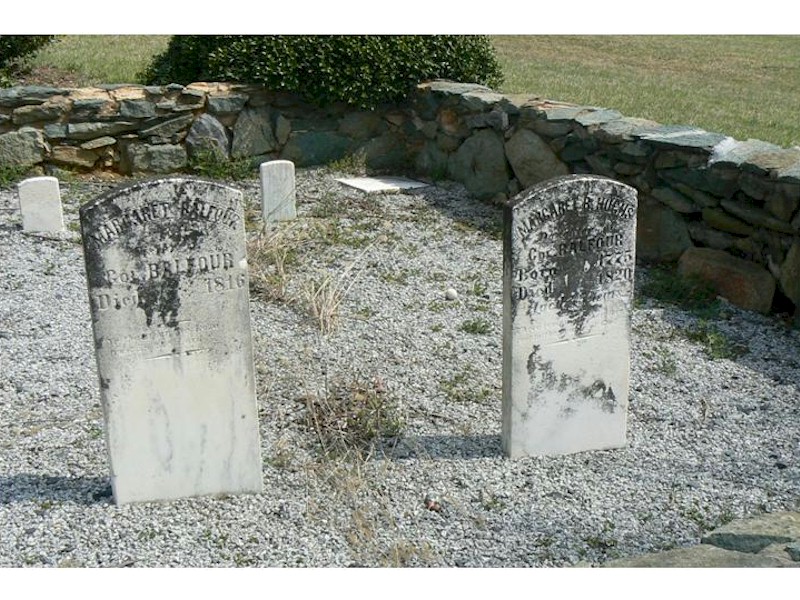
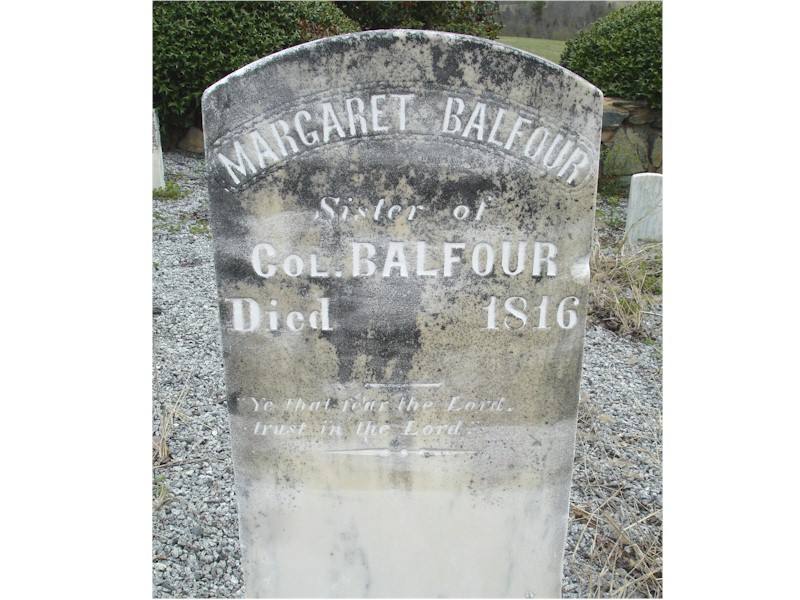
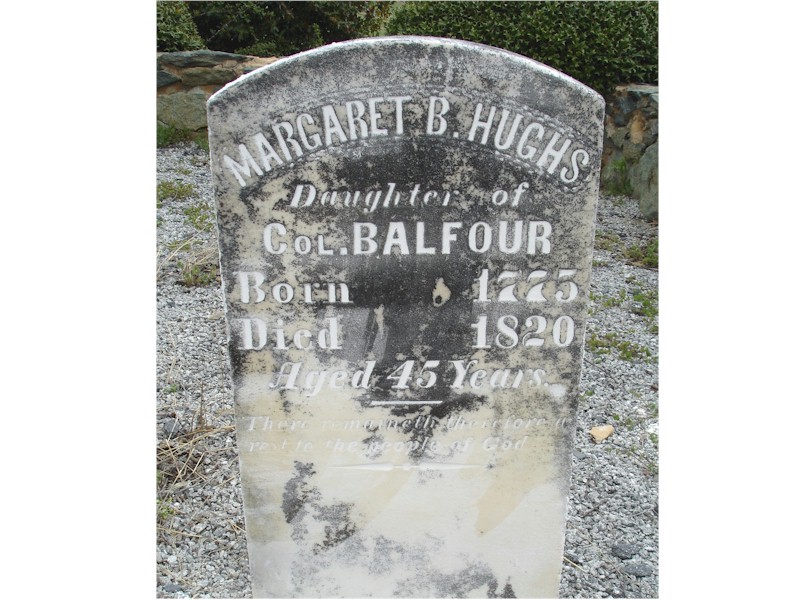
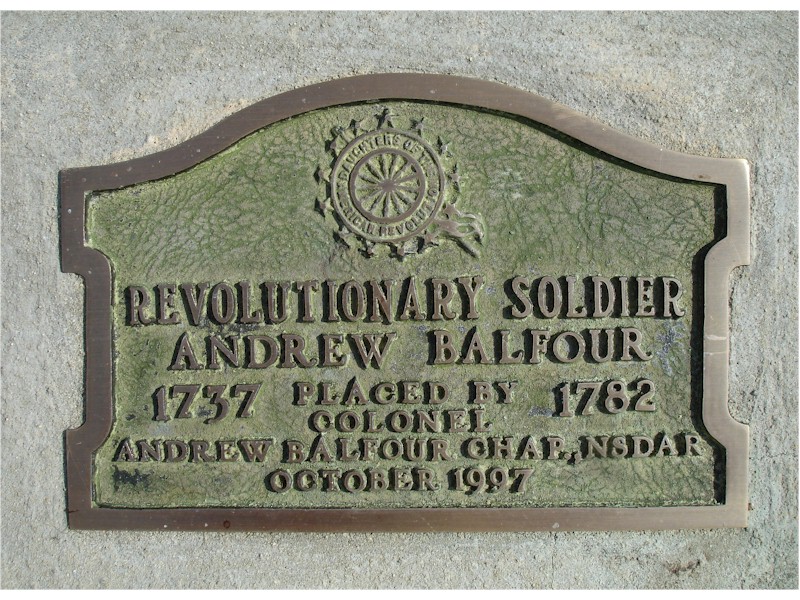
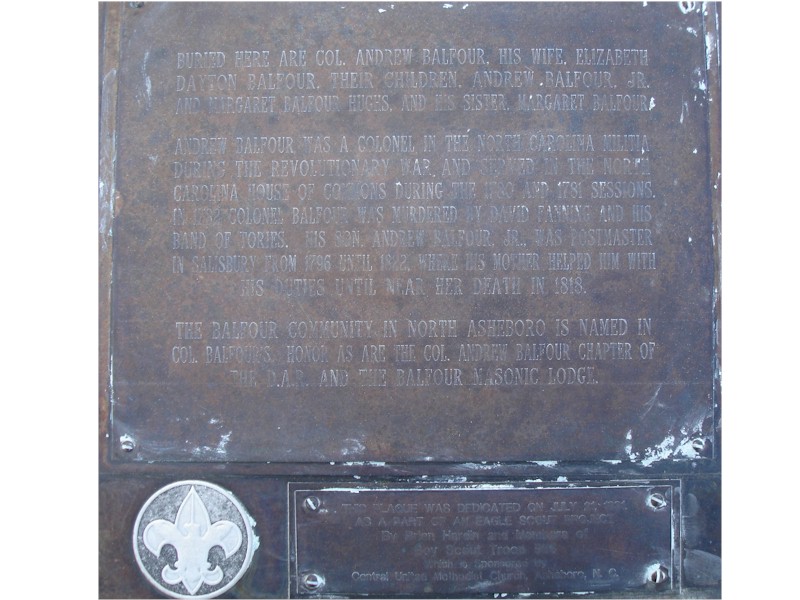
By Brian Hardin and members of Boy Scout Troop 506.
Read the Landmark Designation Report
Read the Landmark Designation Resolution
View the Balfour Cemetery Reading
The dramatic story of the assassination of Colonel Andrew Balfour on the steps of his own home is by far the best known and best documented episode of Randolph County’s Revolutionary War history. Balfour’s grave site is the only remaining physical evidence of his residence in the county, but his memory lives on in numerous ways. Not only is the local chapter of the Daughters of the American Revolution (DAR) named for him, but the Asheboro Masonic Lodge and an entire neighborhood of North Asheboro bears the Balfour name. His grave was originally located on his farm somewhere near the site of his house, the exact location of Balfour’s house is now unknown, but he was buried on a west-facing slope of what is now called Doul Mountain, west of Tot Hill Farm Road and Bettie McGee’s Creek. The grave became the center of a family graveyard now accessed from Doul Mountain Road, and situated on property now belonging to the City of Asheboro but outside the fenced boundaries of the Airport Authority. Once overgrown and surrounded by corn fields, the cemetery was renovated by the DAR and local Boy Scout troops. Five marked graves are enclosed by a stone wall and shaded by crepe myrtles and two young trees. The stone marking Colonel Balfour’s plot in the center is inscribed “murdered by a band of Tories at his home;” a more pious epitaph also reads “In the day of my trouble I sought the Lord.” It is flanked on one side by the grave of his second wife, Elizabeth Dayton who died in 1818 and their son, Andrew Balfour Jr., Oct. 22, 1776-Dec. 31, 1825. On his other side are the markers of the colonel’s sister, Margaret Balfour, who died in 1816, and Margaret B. Hughes, 1775-1820 (his daughter by Elizabeth Dayton).
Related Sites:
Buffalo Ford
Faith Rock
Harmon Cox Mill
Searcy's Ford/Ferry; Waddell's Ferry; Waddell Cemetery